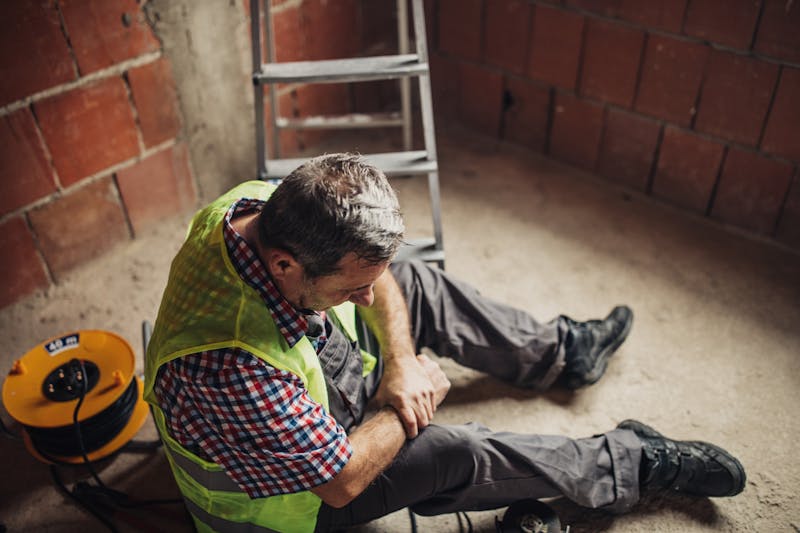
Construction sites in New York are among the most dangerous workplaces, with workers facing risks of falls, electrocution, equipment malfunctions, and other hazards. When a construction worker is injured on the job, they typically seek compensation through workers’ compensation benefits. In effect, when an injury occurs while working off the clock, determining liability and pursuing legal action becomes more complex.
The Legal Framework for Construction Site Injuries in New York
New York’s labor laws and workers’ compensation system govern workplace injuries. The primary laws protecting construction workers include:
- New York Labor Law Sections 200, 240, and 241 – These laws impose strict liability on employers, property owners, and general contractors for certain workplace injuries, especially those involving falls, scaffolding accidents, and unsafe working conditions.
- Workers’ Compensation Law – Requires employers to provide benefits for medical treatment, lost wages, and disability when an employee is injured on the job, regardless of fault.
- OSHA Regulations – Federal safety standards that require employers to maintain safe construction sites.
When an injury occurs off the clock, these laws still play a role in determining liability and compensation eligibility.
Workers’ Compensation and Off-the-Clock Injuries
Workers’ compensation laws in New York generally apply to injuries sustained while performing job duties. However, if a worker is injured while off the clock, the situation becomes more nuanced. Some factors that affect whether workers’ compensation covers off-the-clock injuries include:
- Employer Control and Expectations – If an employer required or encouraged off-the-clock work, the injury may still be covered under workers’ compensation.
- Job-Related Activities – If the worker was performing a task related to their employment, such as setting up equipment or preparing materials before an official shift, they may still qualify for benefits.
- Location of the Injury – If the injury occurred on the job site while performing a work-related task, even outside scheduled hours, workers’ compensation might apply.
If workers’ compensation does not cover the injury, the worker may have other legal options.
Can You File a Personal Injury Lawsuit?
Workers injured while off the clock may still have the option to file a personal injury lawsuit, especially if their injuries resulted from negligence, unsafe working conditions, or defective equipment. Unlike workers’ compensation claims, which limit compensation to medical expenses and lost wages, a personal injury lawsuit allows injured workers to pursue full damages, including pain and suffering.
Negligence by a third party
If a subcontractor, property owner, equipment manufacturer, or another third party played a role in causing the injury, the injured worker may have a valid lawsuit. For example, if a scaffolding company improperly assembled equipment and it collapsed, causing injuries, the injured worker could file a negligence claim against the scaffolding company.
Unsafe worksite conditions
Under New York Labor Laws, property owners and contractors are required to maintain a safe work environment. If an injury occurred due to hazardous conditions—such as a lack of proper fall protection under Labor Law 240 or unsafe scaffolding under Labor Law 241—the employer or property owner may be liable. Even if a worker was off the clock, if they were injured due to unsafe conditions that should have been corrected, they may have legal recourse.
Defective equipment claims
If a worker’s injury was caused by malfunctioning or poorly designed machinery, they might have a claim against the manufacturer, distributor, or supplier. New York product liability laws hold manufacturers responsible for producing and distributing defective products, including construction equipment such as power tools, forklifts, and harnesses. If an equipment failure led to an off-the-clock injury, the worker may be entitled to compensation.
Exceptions and Special Circumstances
Even if a worker was not officially on duty when the injury occurred, specific circumstances may still allow them to seek compensation. Courts consider various factors when determining whether an employer or third party bears responsibility.
Employer knowledge and authorization
If an employer was aware that a worker was present at the job site and performing work-related duties, they might be held liable for failing to stop the work or provide necessary safety measures. For example, if an employer knew a worker frequently arrived early to set up tools but did not provide proper lighting or safety gear, they could be responsible if an accident occurred.
Customary work practices
Many construction sites have informal practices where workers arrive early or stay late to prepare for the workday. If off-the-clock labor was a well-known and accepted practice, a court may view it as part of the employment arrangement, making the employer accountable for any injuries sustained.
Misclassification of workers
Employers sometimes misclassify workers as independent contractors to avoid providing benefits or workers’ compensation coverage. If a worker was misclassified and injured while off the clock, they may have grounds to sue for compensation. Courts look at the level of control an employer exerted over a worker to determine if they should have been classified as an employee. If an employer dictated work hours, tasks, and job responsibilities, the worker might have a strong case for legal action.
Potential Compensation for Off-the-Clock Injuries
If a worker successfully pursues a personal injury claim or workers’ compensation benefits, they may be entitled to:
- Medical Expenses – Coverage for hospital bills, surgeries, physical therapy, and ongoing medical care.
- Lost Wages – Compensation for income lost due to inability to work.
- Pain and Suffering – Available in personal injury lawsuits for emotional distress and reduced quality of life.
- Disability Benefits – If the injury results in partial or total disability, additional compensation may be awarded.
- Wrongful Death Benefits – If an off-the-clock injury results in death, the worker’s family may pursue damages for loss of financial support and companionship.
Evidence Required to Prove Liability
Proving liability in an off-the-clock injury case can be challenging. Key evidence that strengthens a claim may include:
- Eyewitness Testimony – Statements from coworkers, visitors, or bystanders who saw the accident.
- Surveillance Footage – Video evidence of the worker performing job-related duties at the time of injury.
- Employer Communications – Emails, texts, or other documentation showing employer expectations for off-the-clock work.
- Work Logs and Equipment Use Records – Proof that the worker was engaged in job-related activities.
Steps to Take After an Off-the-Clock Injury
If you are injured while working off the clock, take the following steps to protect your rights:
- Seek Medical Attention – Get immediate treatment and document all injuries.
- Report the Injury – Notify your employer in writing, even if you were not officially on the clock.
- Document the Scene – Take photos, collect witness statements, and note any hazardous conditions.
- Consult an Attorney – An experienced construction accident lawyer can evaluate your case and determine the best legal course of action.
Why You Need an Experienced Construction Accident Lawyer
Handling an off-the-clock injury claim requires top legal skills and experience. A knowledgeable construction accident lawyer can:
- Investigate the circumstances of the injury and identify liable parties.
- Collect critical evidence to build a strong case.
- Challenge employer claims that the worker was not on duty.
- Negotiate with insurance companies and opposing parties to secure maximum compensation.
- Represent the worker in court if necessary.
Michael S. Lamonsoff, known as "The Bull," is a top New York construction accident lawyer with a track record of aggressively fighting for injured workers. He has recovered over $500 million in settlements and verdicts, ensuring that victims of workplace injuries receive the justice and compensation they need. To schedule your free consultation, call us at 212-962-1020 or fill out this online contact form.


